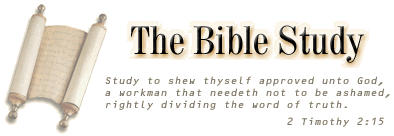A New Antichrist for a Credulous Church
It is a fact of history that many well known Protestant leaders of past centuries have unhesitatingly denounced the Pope as the "Antichrist" and the Roman Catholic Church as the "Whore of Babylon". These include Martin Luther, John Bunyan, John Huss, John Wycliffe, John Calvin, William Tyndale, John Knox, John Wesley and Jonathan Edwards. The publishers of some old German editions of the Bible, circulated in the 15th century, went so far as to include illustrations which showed the Pope amongst the devils of Apocalyptic Hell. Old records of the Anabaptist churches include countless other lesser known names which could be added to this list; names of men and women whose testimony could not be silenced by oppression, persecution or even martyrdom.
In this Ecumenical age, it has become most unpopular to speak about the Catholic Church in this way. It is even less acceptable to identify the present Pope, who is so popular with all men, as the one who currently sits in the chair of Antichrist.
The descendants of the persecuted church have closed their eyes and ears to the lessons of history.
This change in attitude, has its origin early in the 19th century, when a number of prominent teachers began to promote another interpretation of the prophecies about the Antichrist, which took the spotlight off the historical Catholic Church. Instead , the Antichrist was presented as a mysterious evil man of the future, who would appear just prior to the second coming of Jesus. This man would gain power over the whole world and force all men to worship him as God. This clever fabrication was joined with other teaching about a "pre-tribulation rapture", which would remove Christians from the Earth prior to a series of terrible events, called the "Great Tribulation", associated with the rule of the Antichrist.
This is called the "FUTURIST" school of interpretation of prophecy, and stands opposed to the traditional "HISTORICAL" school.
For most layman in the 20th century, the sources of the "futurist" theories are clouded in mystery and lost in history.
However, for those who care to search, it was widely known and well documented by many writers of the late 19th and early 20th centuries that the futurist teaching is of Roman Catholic origin.
The first prominent scholar to publish the futurist teaching in something like its modern form, was the Spanish Jesuit, Ribera, somewhere around 1580-1585. Ribera took up and developed aspects of teaching which is found in the writings of some church "fathers", as far back as the second and third centuries.
These men were trying to interpret the prophecies about Antichrist without reference to John's epistles and in ignorance of the future development of the Papacy. Ribera's goal, however, was to cloud the record of history and direct attention away from the Papacy.
The teaching was quickly accepted by other prominent Roman theologians, but for the next 250 years was confined almost exclusively to the Catholic church.
Then, in the late 18th century, Lacunza, a Chilean Jesuit of Spanish descent, wrote a "futurist" book entitled "The Coming of the Messiah in Glory". In order to conceal its true origins and (presumably) to make it more acceptable to Protestants, the book was dishonestly attributed to the authorship of a "Rabbi Ben Ezra", supposedly a learned Jew, converted to Christianity. It was finally published in England (although still in the Spanish language) in 1816, a few years after Lacunza's death. In a further step of duplicity, the book was placed on the list of works forbidden to Catholics, thus guaranteeing a Protestant readership!
The next link in the chain was Edward Irving, a Scottish Presbyterian minister, who became the founder of the Catholic Apostolic Church, an early forerunner of the Pentecostal movement. In 1827 Irving published a complete English translation of Lacunza's book. A very popular , cheap, abridged version followed in 1833. It was Irving who discovered the truth about the real identity of the author of the book, while searching for information about "Ben Ezra". This information was published in the preface of Irving's translation, along with other details of Lacunza's life and work.
Not surprisingly, the futurist teaching soon made an appearance in some Pentecostal style "prophetic utterances" made during meetings of the Irvingites, thus giving it, for the unwary, a deceptive appearance of approval by the Holy Spirit.
Within a few years it had been taken up by the High Church school in the Anglican church and also by many popular preachers in the Evangelical party in the same church. By around 1830, it had spread to the early leaders of the emerging Brethren movement, who made it a central feature of their prophetic teaching, and writing.
Further publicity came in the early 20th century, when a man named Schofield included it in the footnotes of a "Teachers Bible" which became quite popular and is still widely circulated.
From these small beginnings, it gradually gained wider acceptance, until, eventually, it was taken up by the popular authors of the last two or three decades. Their books have been widely read and accepted by gullible Christians all over the world. Now, at the end of the 20th century, although there are major differences about whether the timing of the "rapture" is "pre", "mid", or "post" tribulation, the acceptance of the identity of the Antichrist as a future evil ruler, appears to be almost universal.
By Allon Maxwell
